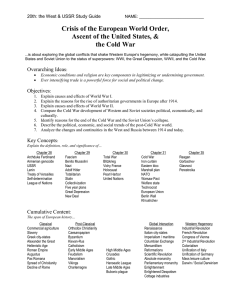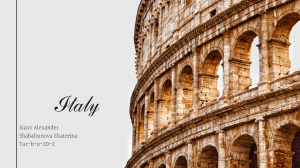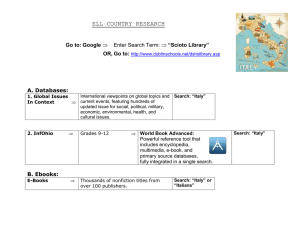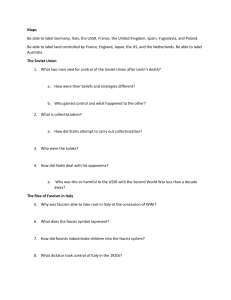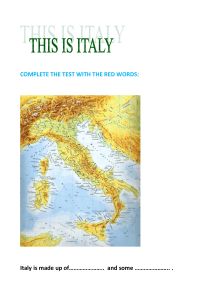Soviet-Italian Relations in the Late 1950s: Politics & Culture
advertisement
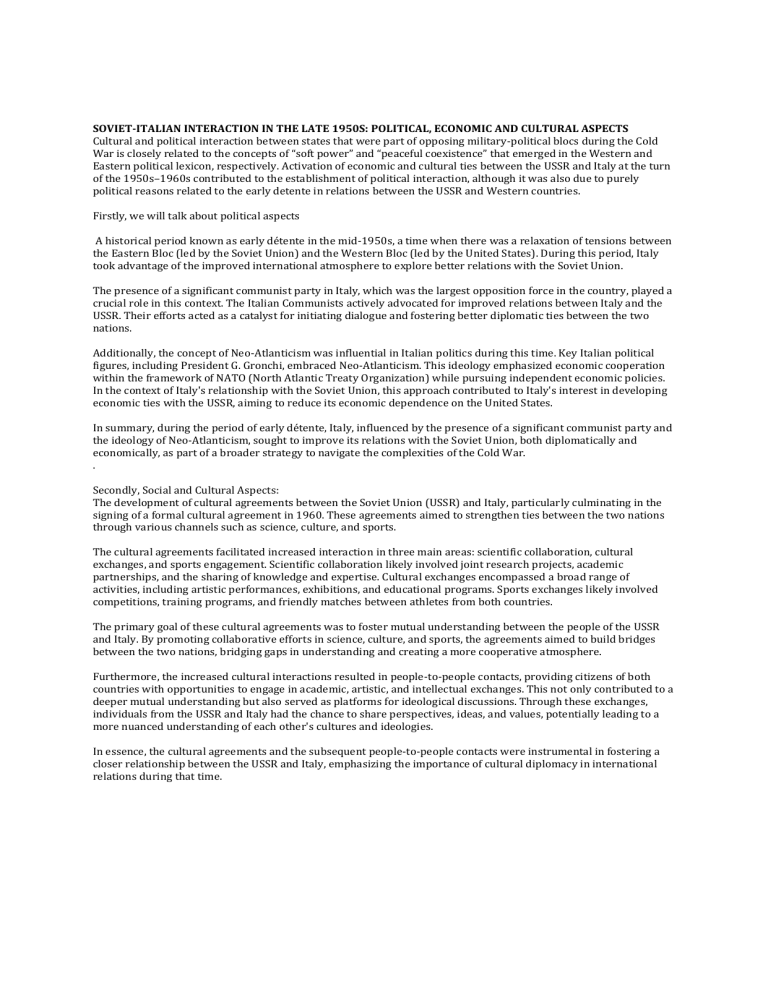
SOVIET-ITALIAN INTERACTION IN THE LATE 1950S: POLITICAL, ECONOMIC AND CULTURAL ASPECTS Cultural and political interaction between states that were part of opposing military-political blocs during the Cold War is closely related to the concepts of “soft power” and “peaceful coexistence” that emerged in the Western and Eastern political lexicon, respectively. Activation of economic and cultural ties between the USSR and Italy at the turn of the 1950s–1960s contributed to the establishment of political interaction, although it was also due to purely political reasons related to the early detente in relations between the USSR and Western countries. Firstly, we will talk about political aspects A historical period known as early détente in the mid-1950s, a time when there was a relaxation of tensions between the Eastern Bloc (led by the Soviet Union) and the Western Bloc (led by the United States). During this period, Italy took advantage of the improved international atmosphere to explore better relations with the Soviet Union. The presence of a significant communist party in Italy, which was the largest opposition force in the country, played a crucial role in this context. The Italian Communists actively advocated for improved relations between Italy and the USSR. Their efforts acted as a catalyst for initiating dialogue and fostering better diplomatic ties between the two nations. Additionally, the concept of Neo-Atlanticism was influential in Italian politics during this time. Key Italian political figures, including President G. Gronchi, embraced Neo-Atlanticism. This ideology emphasized economic cooperation within the framework of NATO (North Atlantic Treaty Organization) while pursuing independent economic policies. In the context of Italy's relationship with the Soviet Union, this approach contributed to Italy's interest in developing economic ties with the USSR, aiming to reduce its economic dependence on the United States. In summary, during the period of early détente, Italy, influenced by the presence of a significant communist party and the ideology of Neo-Atlanticism, sought to improve its relations with the Soviet Union, both diplomatically and economically, as part of a broader strategy to navigate the complexities of the Cold War. . Secondly, Social and Cultural Aspects: The development of cultural agreements between the Soviet Union (USSR) and Italy, particularly culminating in the signing of a formal cultural agreement in 1960. These agreements aimed to strengthen ties between the two nations through various channels such as science, culture, and sports. The cultural agreements facilitated increased interaction in three main areas: scientific collaboration, cultural exchanges, and sports engagement. Scientific collaboration likely involved joint research projects, academic partnerships, and the sharing of knowledge and expertise. Cultural exchanges encompassed a broad range of activities, including artistic performances, exhibitions, and educational programs. Sports exchanges likely involved competitions, training programs, and friendly matches between athletes from both countries. The primary goal of these cultural agreements was to foster mutual understanding between the people of the USSR and Italy. By promoting collaborative efforts in science, culture, and sports, the agreements aimed to build bridges between the two nations, bridging gaps in understanding and creating a more cooperative atmosphere. Furthermore, the increased cultural interactions resulted in people-to-people contacts, providing citizens of both countries with opportunities to engage in academic, artistic, and intellectual exchanges. This not only contributed to a deeper mutual understanding but also served as platforms for ideological discussions. Through these exchanges, individuals from the USSR and Italy had the chance to share perspectives, ideas, and values, potentially leading to a more nuanced understanding of each other's cultures and ideologies. In essence, the cultural agreements and the subsequent people-to-people contacts were instrumental in fostering a closer relationship between the USSR and Italy, emphasizing the importance of cultural diplomacy in international relations during that time.
